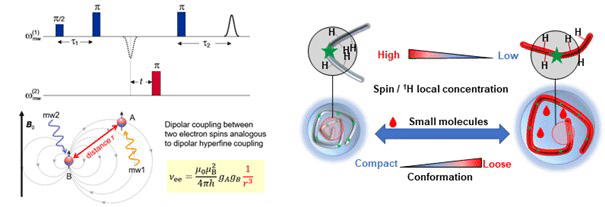EPR study of neutral dietary fibres
Background
The interaction between dietary fibres (DF) and small molecules are within great interest in chemical, biological, and nutrition related scientific communities, because of the great health promoting effect of daily intake of dietary fibres. It has been widely recognized that the physico-chemical properties (like viscosity, bulking ability) of DF affect the uptake of small molecules in the digestive tract system. However, in molecular level, the interaction mechanism, including type of interaction binding force, strength of binding, factor of affecting binding, are still unknown and remain to be solved.
Research Goal
In this project, various DF are labelled with stable radical to activate the EPR accessibility of DF. Various EPR technologies (DEER, RIDME, etc.) will be applied in structure identification and interaction study with the health-related small molecules in molecular level. The long-term goal is to understand the factors induced by DF affect small molecule absorption, and then explore the effect and application in medical, nutritional as well as biological field based on these findings.

Contact
Professur f. Lebensmittelbiochemie
Schmelzbergstrasse 9
8092
Zürich
Switzerland
